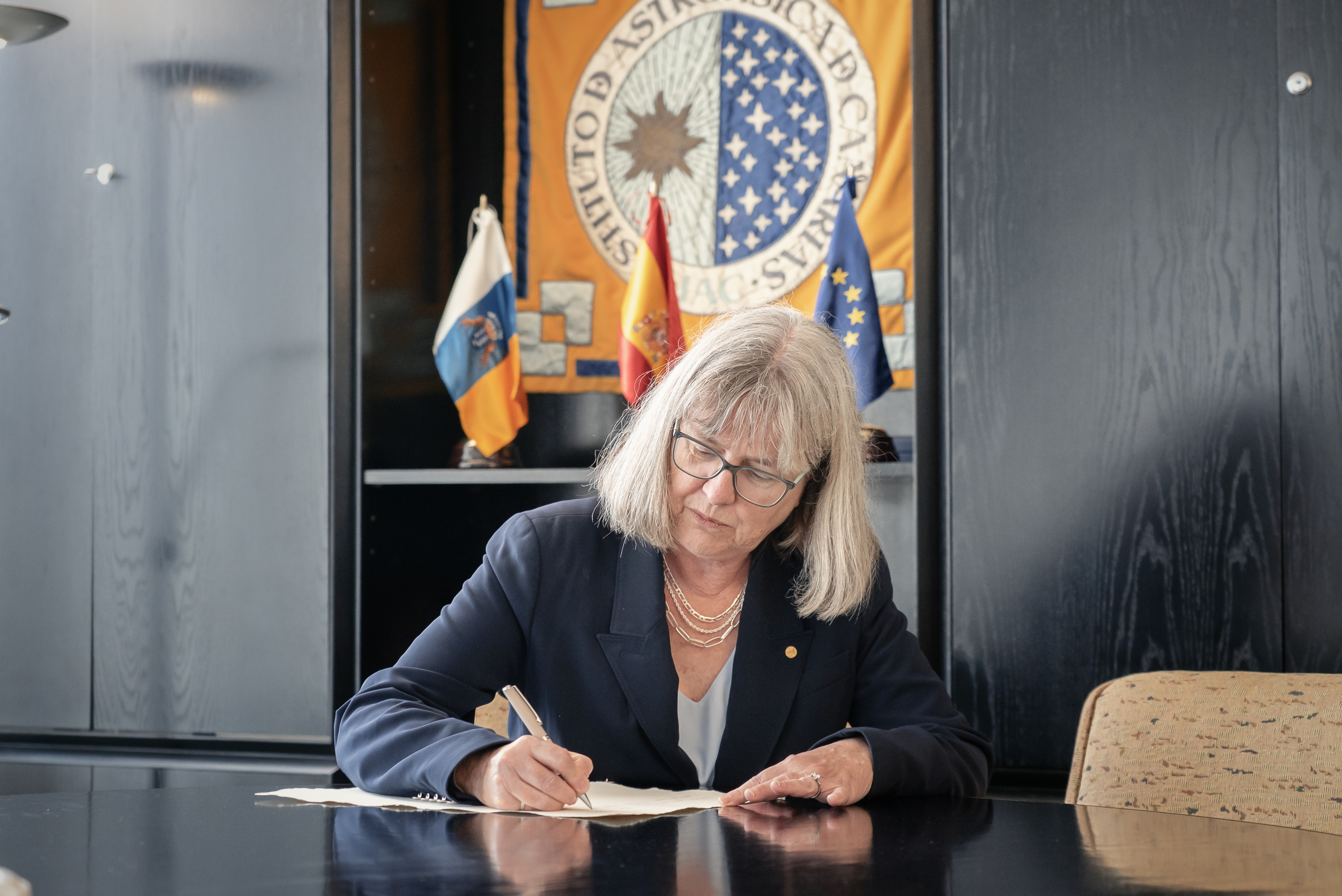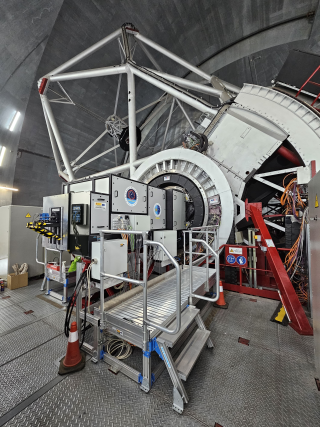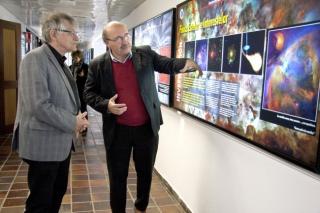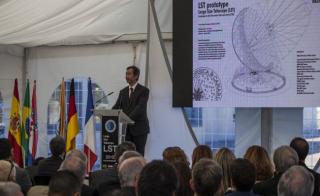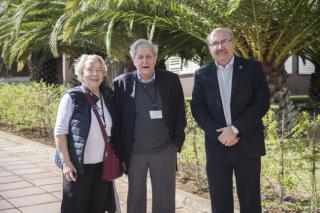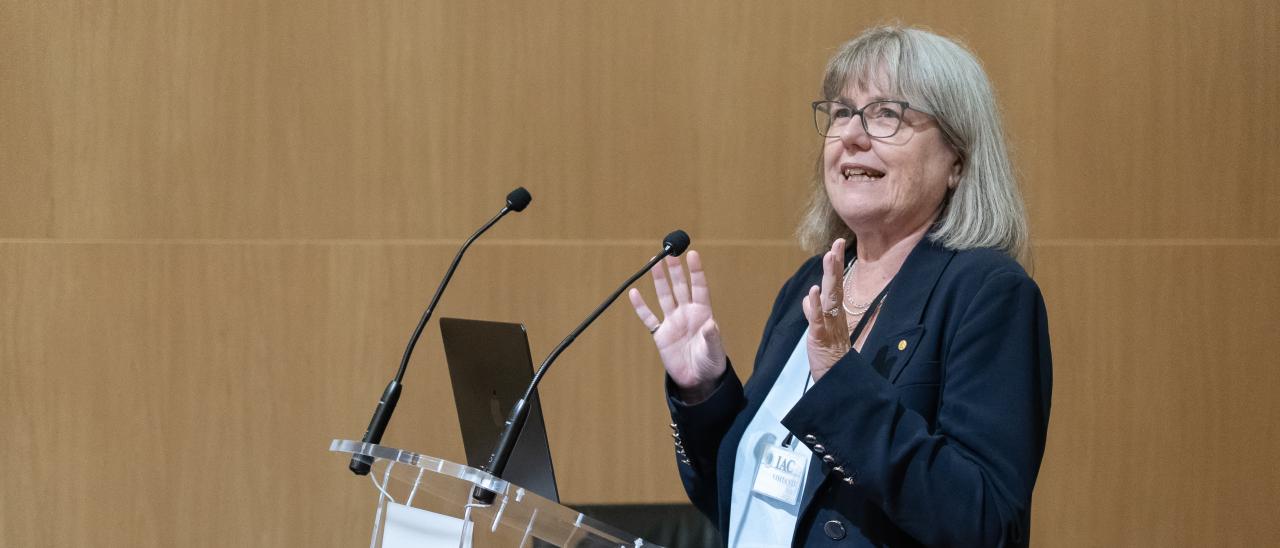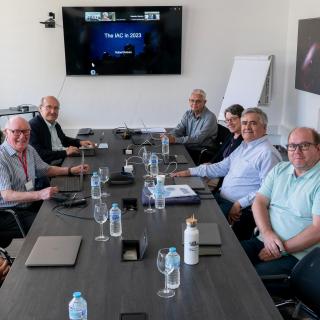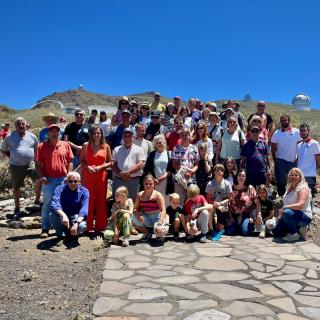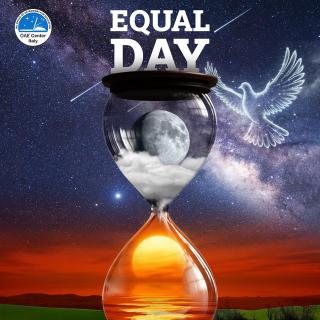The Instituto de Astrofísica de Canarias (IAC) has welcomed Donna Strickland, 2018 Nobel Prize in Physics, who delivered a lecture entitled "From Nonlinear Optics to High-Intensity Laser Physics". The talk, held at the IAC Auditorium, was introduced by Garik Israelian, researcher at the center and co-founder of the Starmus Festival, an event in which Strickland participated previously in La Palma last week.
During her presentation, Strickland explained in an accessible manner the fundamentals of her pioneering research on Chirped Pulse Amplification (CPA), work for which she was awarded the Nobel Prize together with Gérard Mourou and Arthur Ashkin. This technique allows increasing the intensity of laser pulses without damaging the amplification equipment.
"Beauty lies in simplicity," Strickland emphasized when explaining the basic principle of her discovery: temporarily stretching a short laser pulse to reduce its intensity before amplifying it, and subsequently compressing it again to obtain ultra-short, high-energy pulses. This technique has made it possible to generate the most intense laser pulses ever created, opening new fields of research in fundamental physics and numerous practical applications.
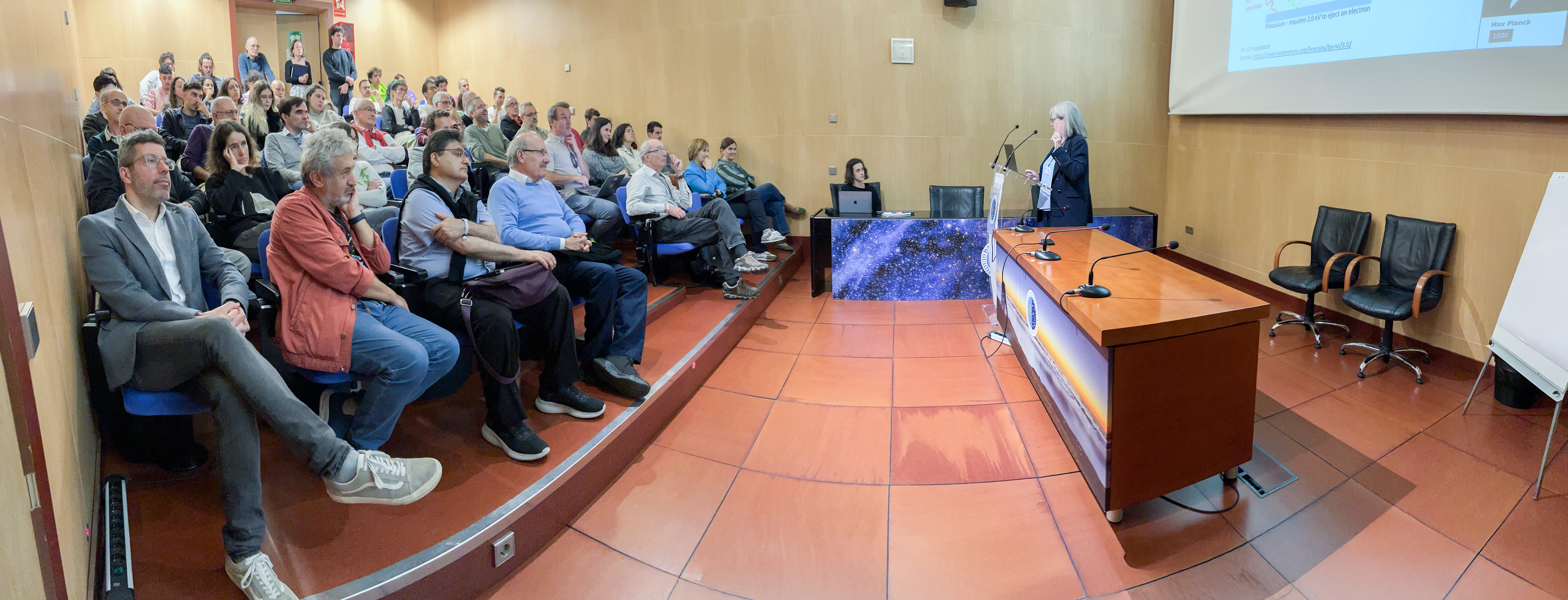
In her talk, the scientist traced the historical journey from linear optical physics to nonlinear optics, explaining how technological development, particularly the invention of the laser in 1960, allowed scientists to observe light-matter interaction phenomena that had been theoretically predicted since the 1930s by physicist Maria Goeppert-Mayer.
Strickland, who conducted this work during her doctorate at the University of Rochester under the supervision of Gérard Mourou, shared anecdotes about the practical challenges she faced, including the use of 1.4 kilometers of optical fiber to conduct her experiment. To conclude, she highlighted the future potential of high-intensity laser physics to unravel the fundamental mysteries of matter and antimatter, and invited young scientists to seek new revolutionary ideas to advance in this field.
Strickland's visit to the IAC contributes to the center's efforts to promote the professional development of future generations of scientists, including greater female representation in disciplines where women have traditionally been underrepresented. Donna Strickland is only the third woman in 120 years of history to receive the Nobel Prize in Physics, following Marie Curie (1903) and Maria Goeppert-Mayer (1963).
The applications of Strickland's work have been fundamental in fields as diverse as ophthalmic medicine, industrial microfabrication, particle acceleration and laser fusion, as well as in scientific research that allows studying extreme conditions similar to those inside stars, demonstrating how basic research can translate into benefits for society.
